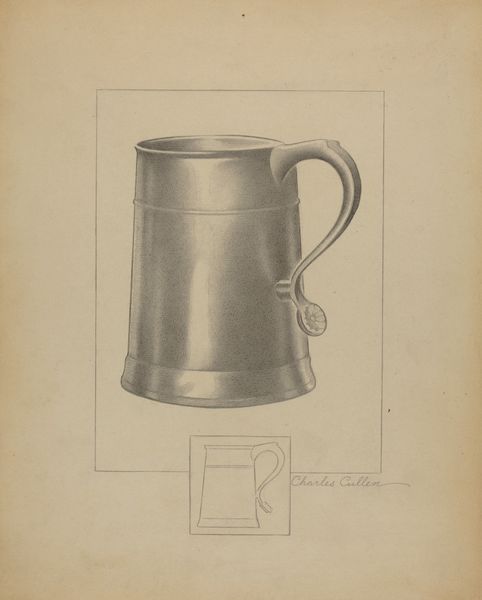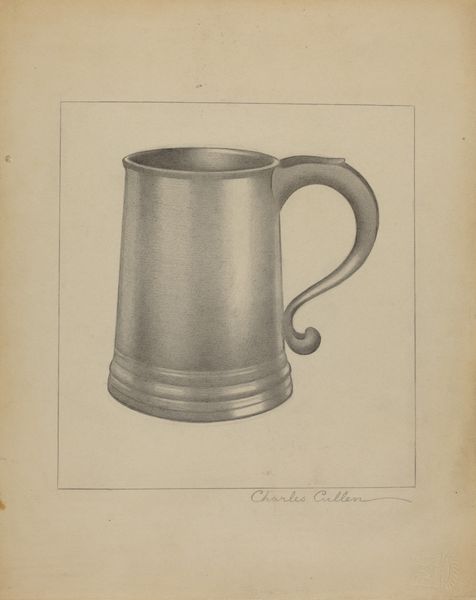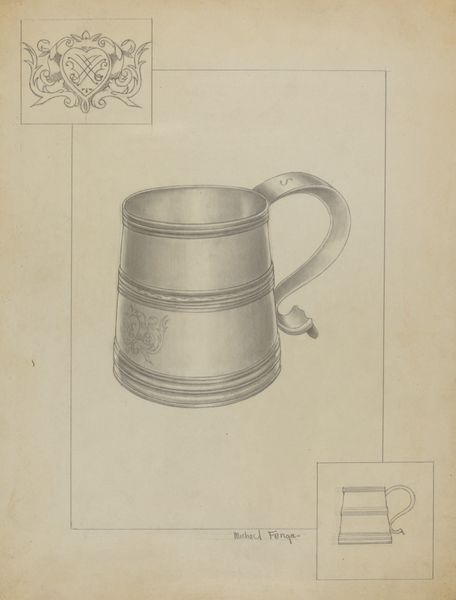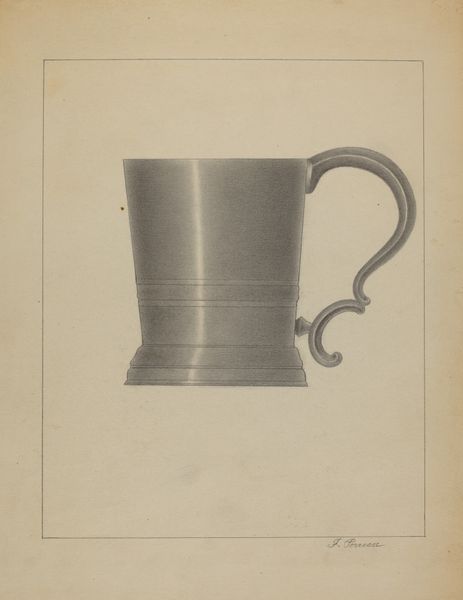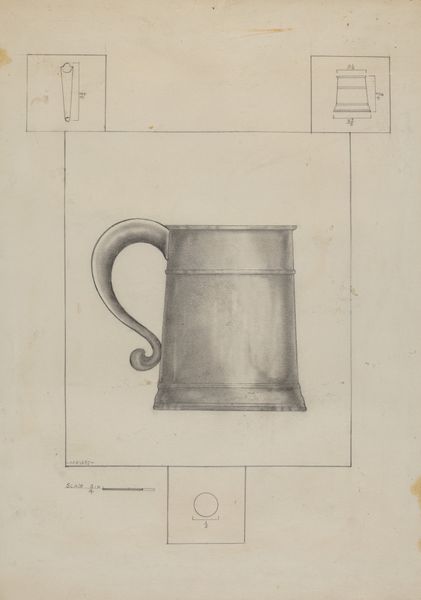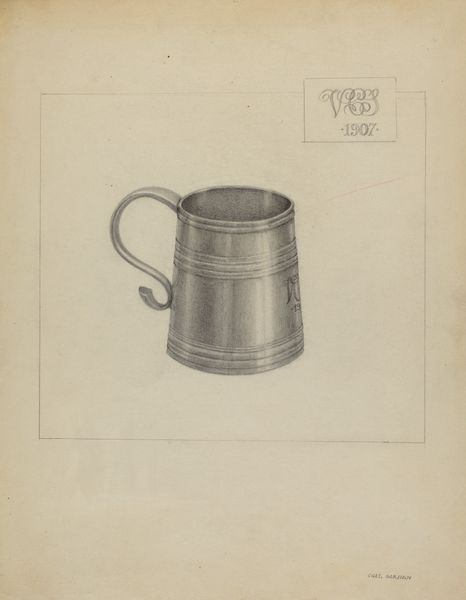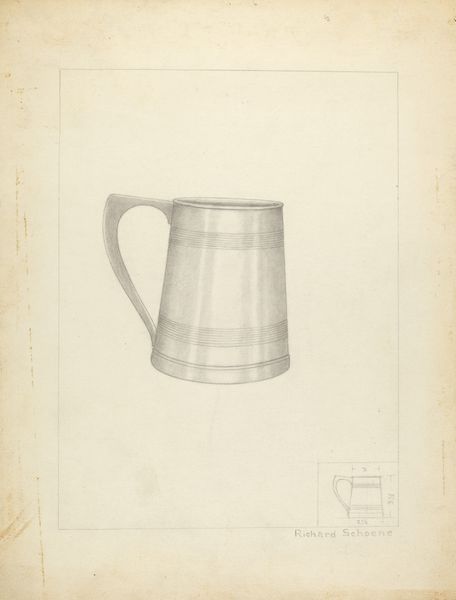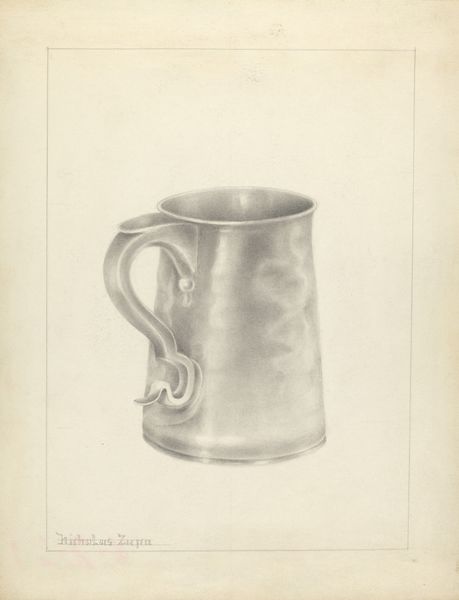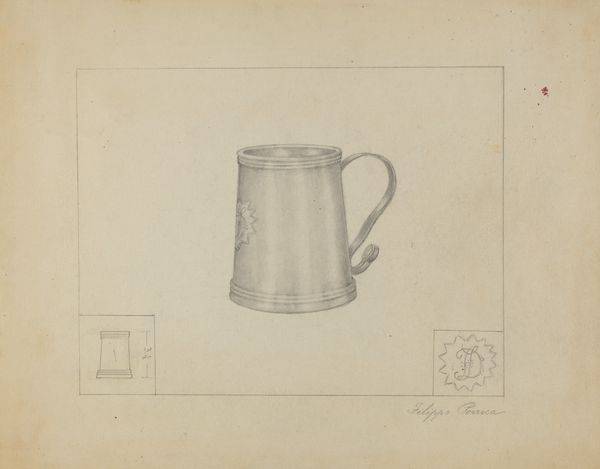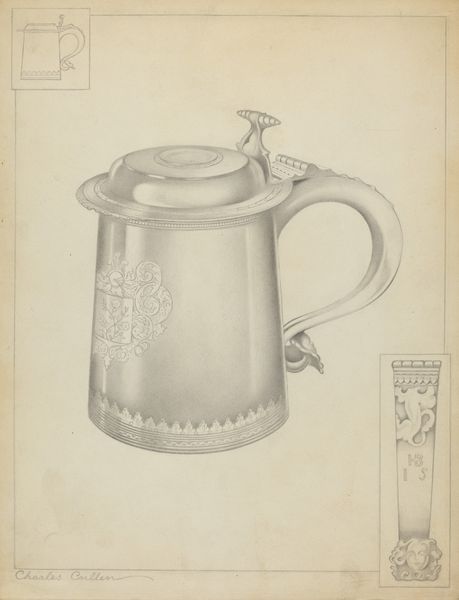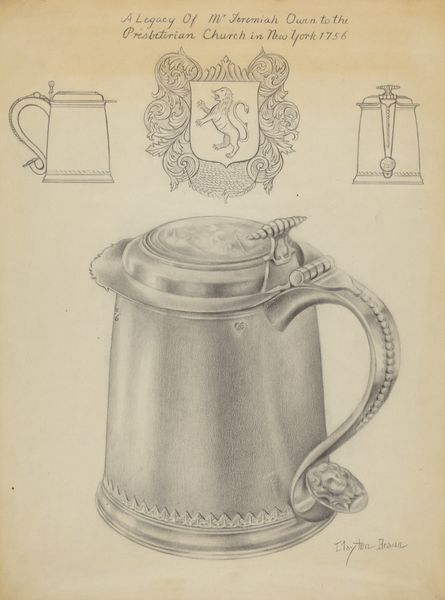
drawing, pencil
#
pencil drawn
#
drawing
#
pencil drawing
#
pencil
#
academic-art
#
realism
Dimensions: overall: 28.6 x 22.2 cm (11 1/4 x 8 3/4 in.)
Copyright: National Gallery of Art: CC0 1.0
Editor: This drawing, "Pewter Mug" by Charles Cullen from around 1936, rendered in pencil, feels remarkably solid and present, despite being a two-dimensional work on paper. It's interesting how a common object can be transformed through careful artistic observation. What stands out to you about the piece? Curator: The immediate impression is one of technical skill. Note the gradations in shading—a clear attention to volume and the way light interacts with a cylindrical form. The artist presents a study in realism, a precise registration of shape and tone. Observe also the careful rendering of the mug’s surface; Cullen articulates the smooth, reflective character of the metal. Editor: It's true, the realism is striking. But the drawing also includes what appears to be a technical sketch of the same mug in the lower left corner, almost like a blueprint. Does that second drawing change how you perceive the larger one? Curator: Precisely. The presence of that technical drawing provides a crucial key. It reveals the artist’s intention is not merely replication but dissection—a breaking down of form to its constituent parts. It creates a fascinating tension between the objective realism of the mug and the deconstruction of the design. What could this relationship suggest? Editor: Perhaps a desire to both appreciate and understand the object—to see it as both art and artifact. It prompts us to consider the mug's design, not just its appearance. Curator: Indeed. And through that consideration, Cullen’s “Pewter Mug” invites us to analyze our perceptions and the very nature of representation itself. Editor: I never thought a drawing of a mug could lead to so much reflection on artistic intention. Thanks for sharing your insights.
Comments
No comments
Be the first to comment and join the conversation on the ultimate creative platform.
